This document provides an introduction to arrays in Java, explaining their characteristics, declaration, element selection, and initialization. It discusses the use of arrays in programming, including their role in graphics and as data structures like two-dimensional arrays and ArrayLists. Additionally, it contrasts arrays with linked structures, detailing their advantages and disadvantages for data manipulation and access.
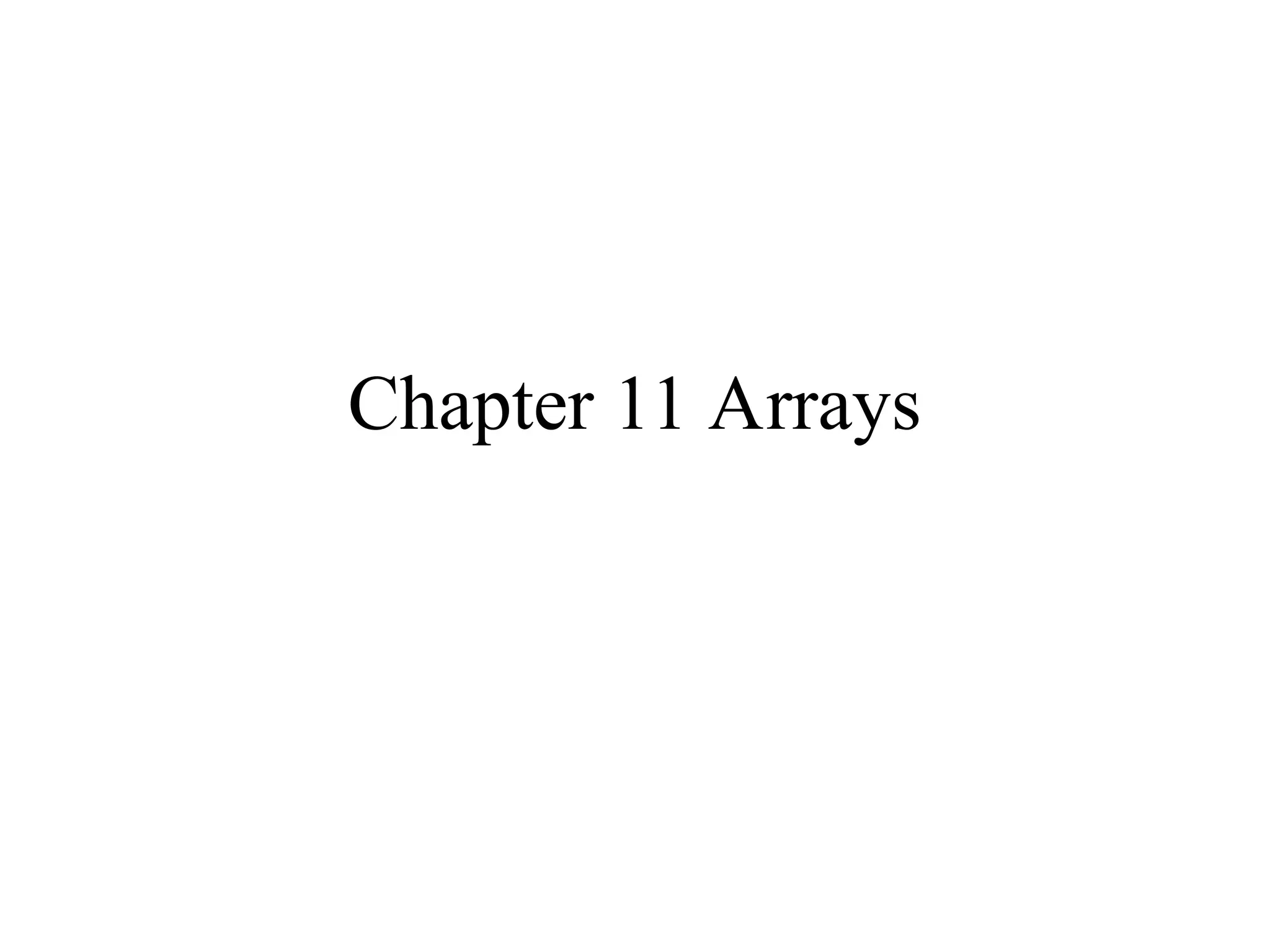
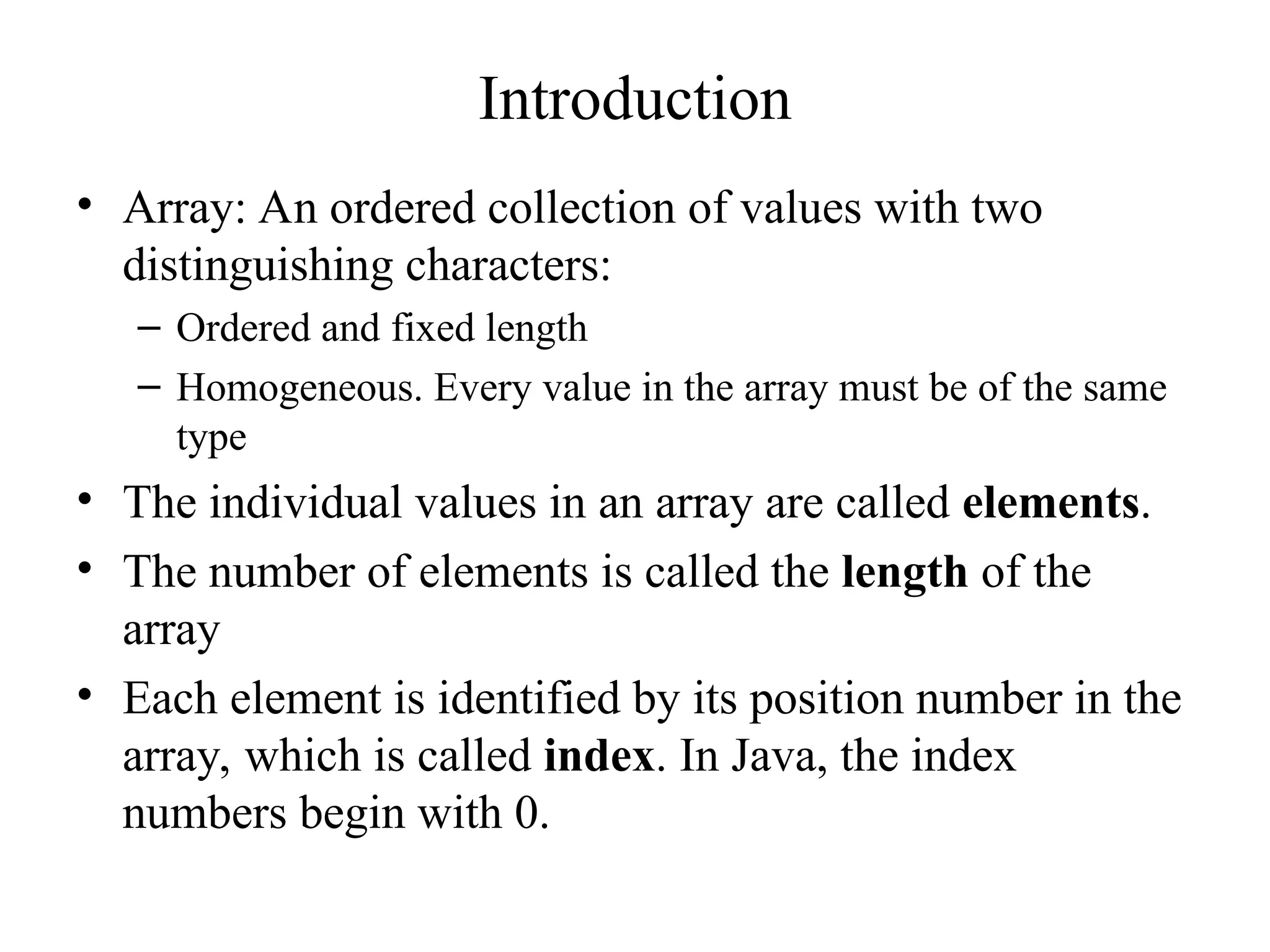
![Array declaration
An array is characterized by
• Element type
• Length
type[ ] identifier = new type[length];
Default values in initialization
• numerics 0
• boolean false
• objects null](https://image.slidesharecdn.com/ch11-240826123401-5afba3ce/75/Arrays-in-java-programming-language-slides-3-2048.jpg)
![An array of objects
Elements of an array can be objects of any Java class.
Example: An array of 5 instances of the student class
Student[] topStudents = new Student[5];](https://image.slidesharecdn.com/ch11-240826123401-5afba3ce/75/Arrays-in-java-programming-language-slides-4-2048.jpg)
![Defining length
• Use named constant to declare the length of an array.
private static final in N_JUDGES = 5;
double[ ] scores = new double[N_JUDGES];
• Or read the length of an array from the user.](https://image.slidesharecdn.com/ch11-240826123401-5afba3ce/75/Arrays-in-java-programming-language-slides-5-2048.jpg)
![Selecting elements
Identifying an element
array[index]
• Index can be an expression
• Cycling through array elements
for (int i = 0; i < array.length; i++) {
operations involving the ith element
}](https://image.slidesharecdn.com/ch11-240826123401-5afba3ce/75/Arrays-in-java-programming-language-slides-6-2048.jpg)
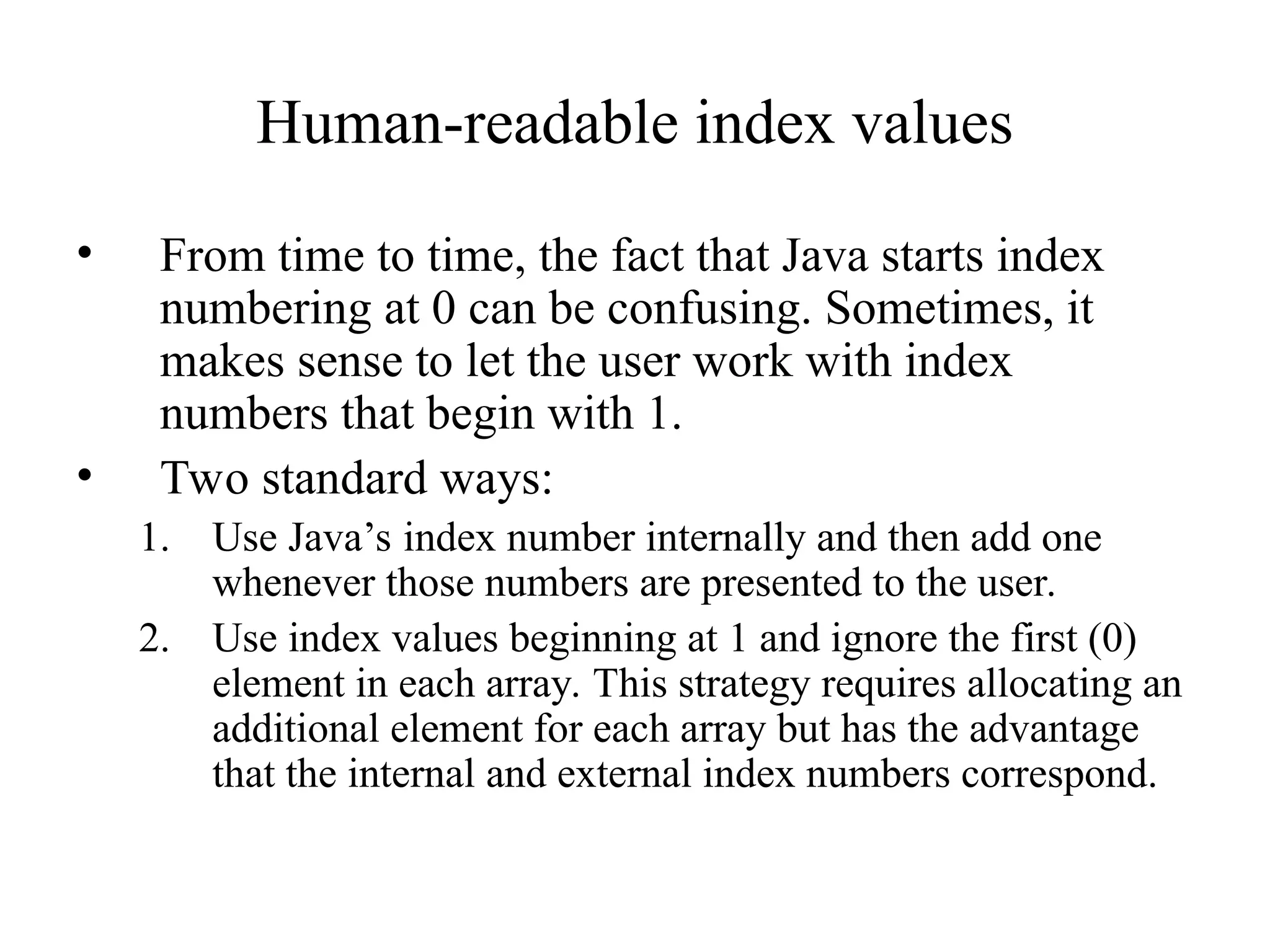
![Internal representation of arrays
Student[] topStudents = new Student[2];
topStudents[0] = new Student(“Abcd”, 314159);
FFB8
FFBC
FFC0
1000
topStudents
stack
1000
1004
1008
100C
1010
length
topStudents[0]
topStudents[1]
2
null
null
heap](https://image.slidesharecdn.com/ch11-240826123401-5afba3ce/75/Arrays-in-java-programming-language-slides-8-2048.jpg)
![Student[] topStudents = new Student[2];
topStudents[0] = new Student(“Abcd”, 314159);
1000
1004
1008
100C
1010
1014
1018
101C
1020
1024
1028
102C
1030
1034
1038
103C
1040
4
A b
c d
1014
314159
0.0
false
2
1028
null
length
topStudents[0]
topStudents[1]
length
studentName
studentID
creditsEarned
paidUp
1000
topStudents FFB8
FFBC
FFC0](https://image.slidesharecdn.com/ch11-240826123401-5afba3ce/75/Arrays-in-java-programming-language-slides-9-2048.jpg)
![Passing arrays as parameters
• Recall: Passing objects (references) versus primitive
type (values) as parameters.
• Java defines all arrays as objects, implying that the
elements of an array are shared between the callee
and the caller.
swapElements(array[i], array[n – i – 1]) (wrong)
swapElements(array, i, n – i – 1)](https://image.slidesharecdn.com/ch11-240826123401-5afba3ce/75/Arrays-in-java-programming-language-slides-10-2048.jpg)
![private void swapElements(int[] array, int p1, int p2) {
int tmp = array[p1];
array[p1] = array[p2];
array[p2] = tmp;
}
• Every array in Java has a length field.
private void reverseArray(int[] array) {
for (int i = 0; i < array.length / 2; i++) {
swapElements(array, i, array.length – i – 1);
}
}](https://image.slidesharecdn.com/ch11-240826123401-5afba3ce/75/Arrays-in-java-programming-language-slides-11-2048.jpg)
![Using arrays
Example: Letter frequency table
• Design a data structure for the problem
Array: letterCounts[ ]
index: distance from ‘A’
index = Character.toUpperCase(ch) – ‘A’
letterCounts[0] is the count for ‘A’ or ‘a’](https://image.slidesharecdn.com/ch11-240826123401-5afba3ce/75/Arrays-in-java-programming-language-slides-12-2048.jpg)
![A convenient way of initializing an array:
int[ ] digits = {0, 1, 2, 3, 4, 5, 6, 7, 8, 9};
private static final String[ ] US_CITIES_OVER_ONE_MILLION = {
“New York”,
“Los Angeles”,
“Chicago”,
“Huston”,
“Philadelphia”,
“Phoenix”,
“San Diego”,
“San Antonio”,
“Dallas”,
}](https://image.slidesharecdn.com/ch11-240826123401-5afba3ce/75/Arrays-in-java-programming-language-slides-13-2048.jpg)
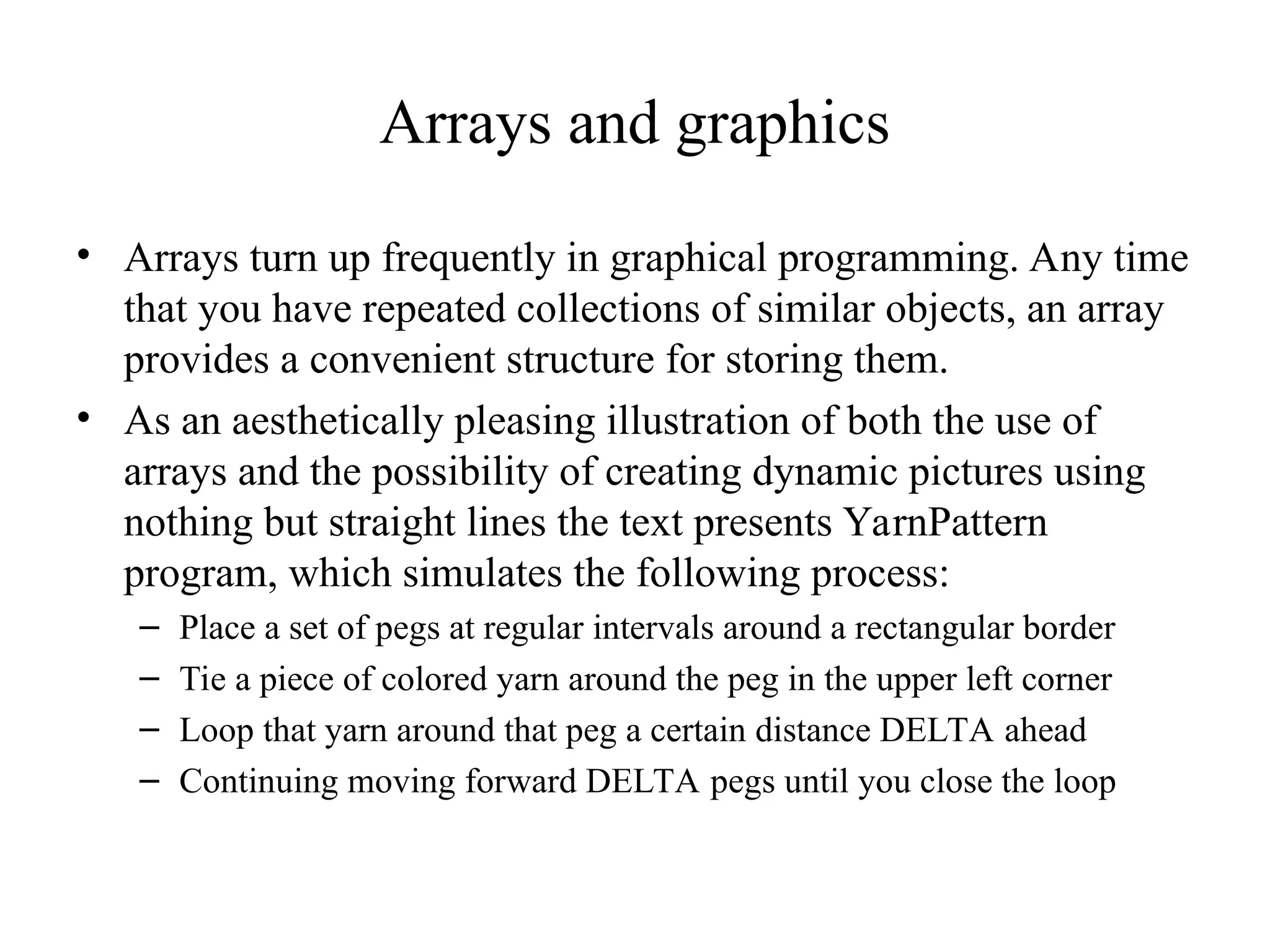
![Two-dimensional arrays
Each element of an array is an array (of the same
dimension)
int[][] A = new int[3][2]
An array of three arrays of dimension two
A[0][0] A[0][1]
A[1][0] A[1][1]
A[2][0] A[2][0]
3-by-2 matrix](https://image.slidesharecdn.com/ch11-240826123401-5afba3ce/75/Arrays-in-java-programming-language-slides-15-2048.jpg)
![Memory allocation (row orientation)
A[0][0]
A[0][1]
A[1][0]
A[1][1]
A[2][0]
A[2][1]](https://image.slidesharecdn.com/ch11-240826123401-5afba3ce/75/Arrays-in-java-programming-language-slides-16-2048.jpg)
![Initializing a two-dimensional array
Static int A[3][2] = {
{1, 4},
{2, 5},
{3, 6}
};
A 3-by-2 matrix](https://image.slidesharecdn.com/ch11-240826123401-5afba3ce/75/Arrays-in-java-programming-language-slides-17-2048.jpg)
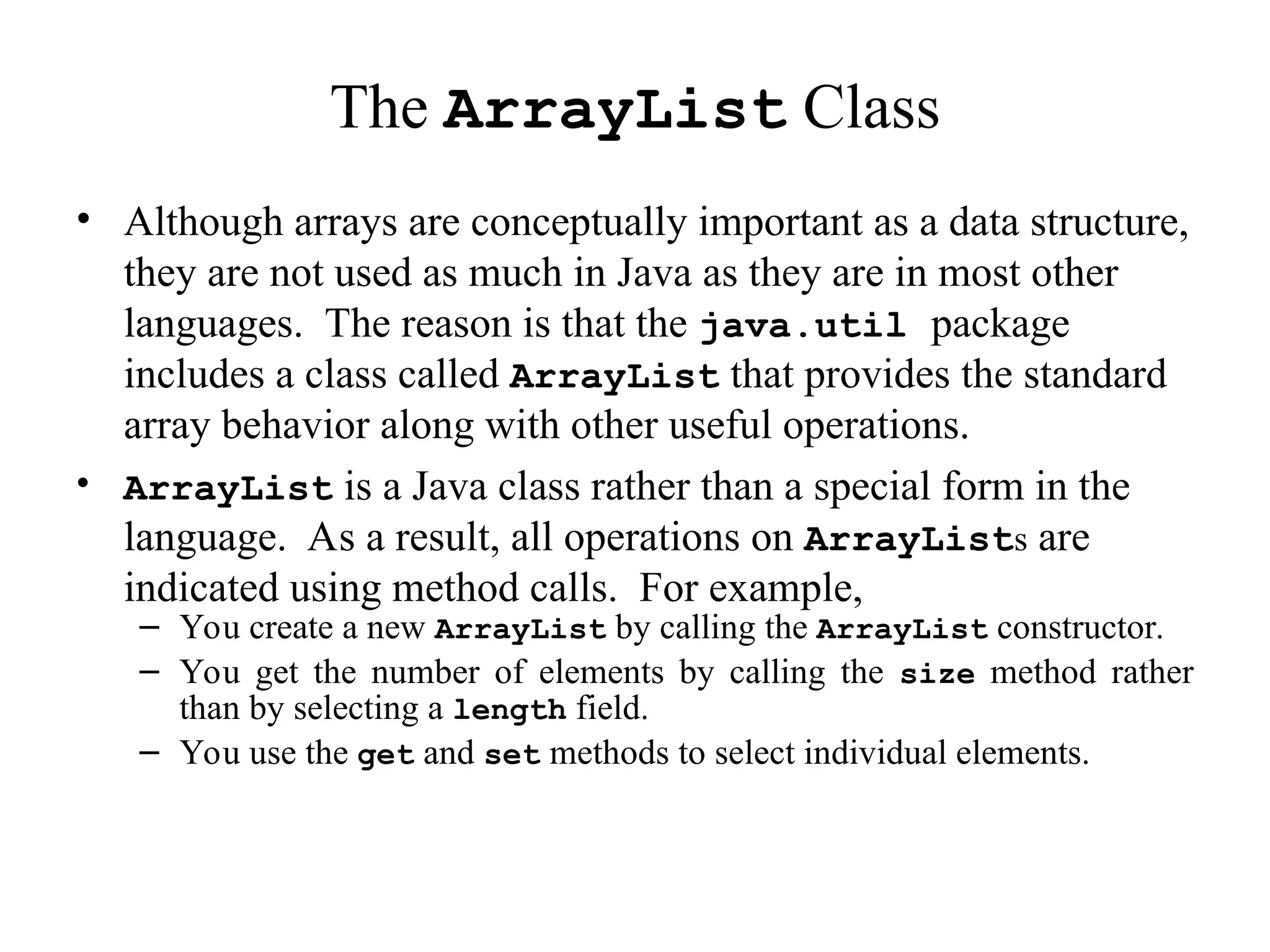
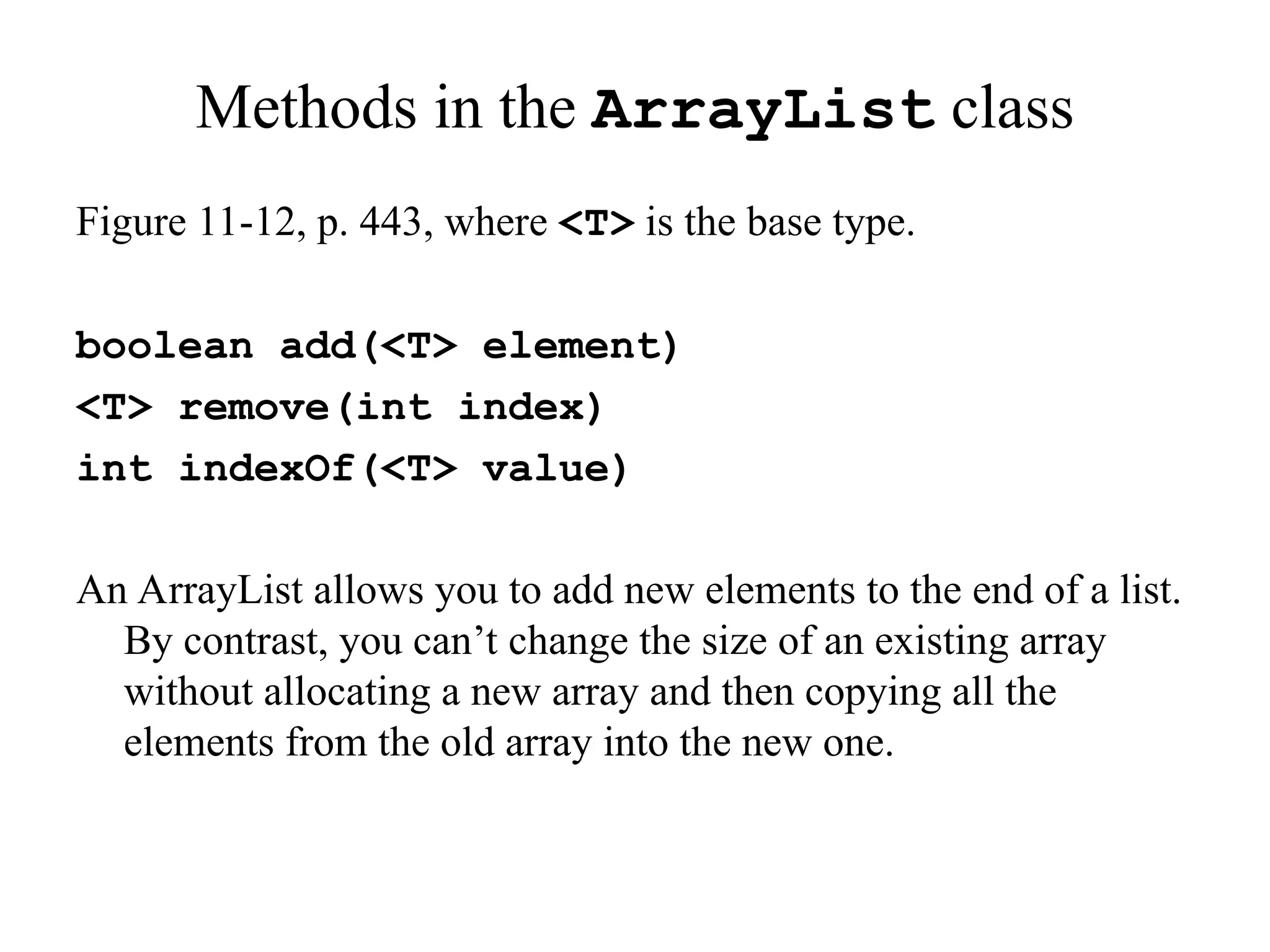
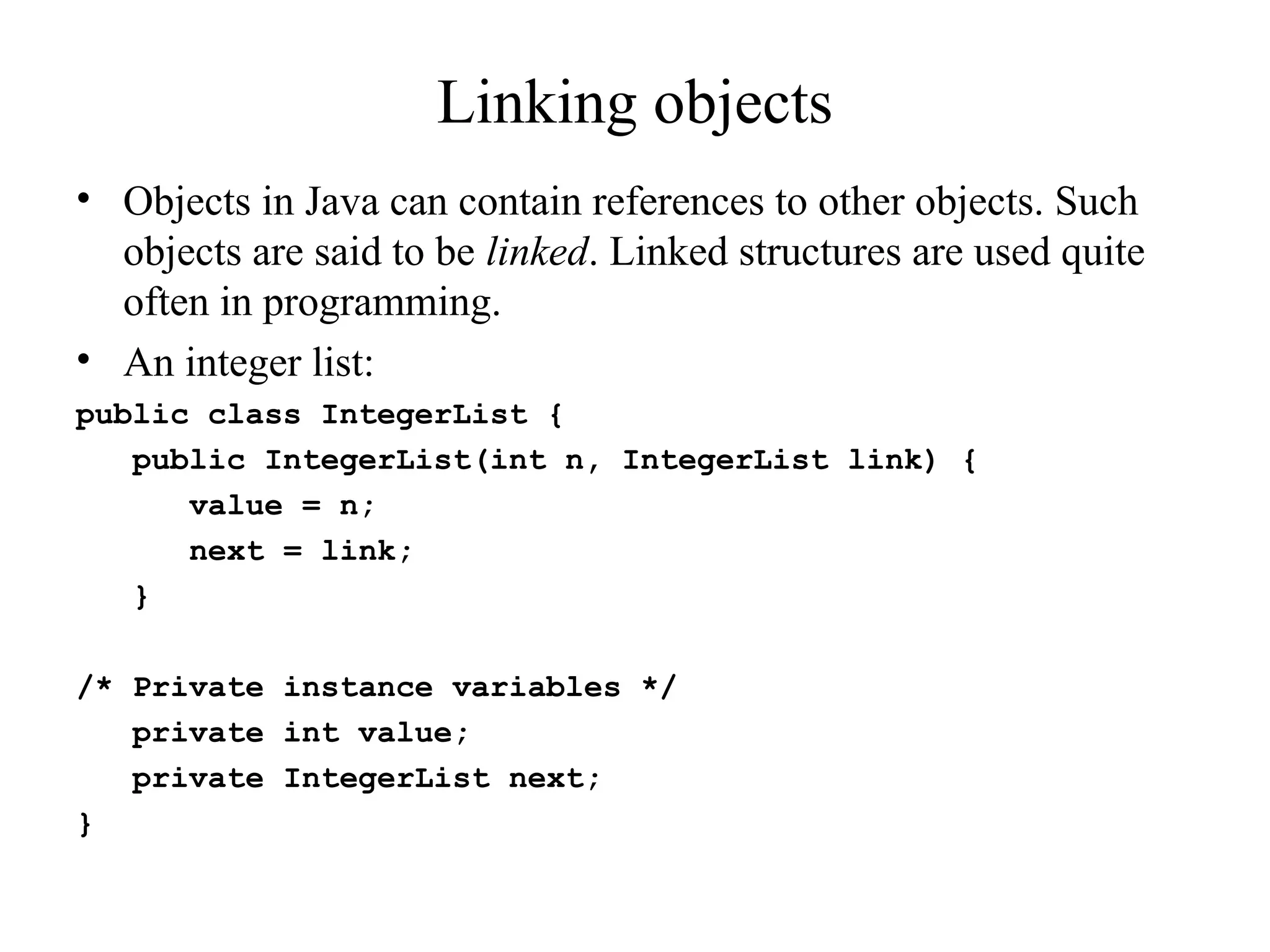
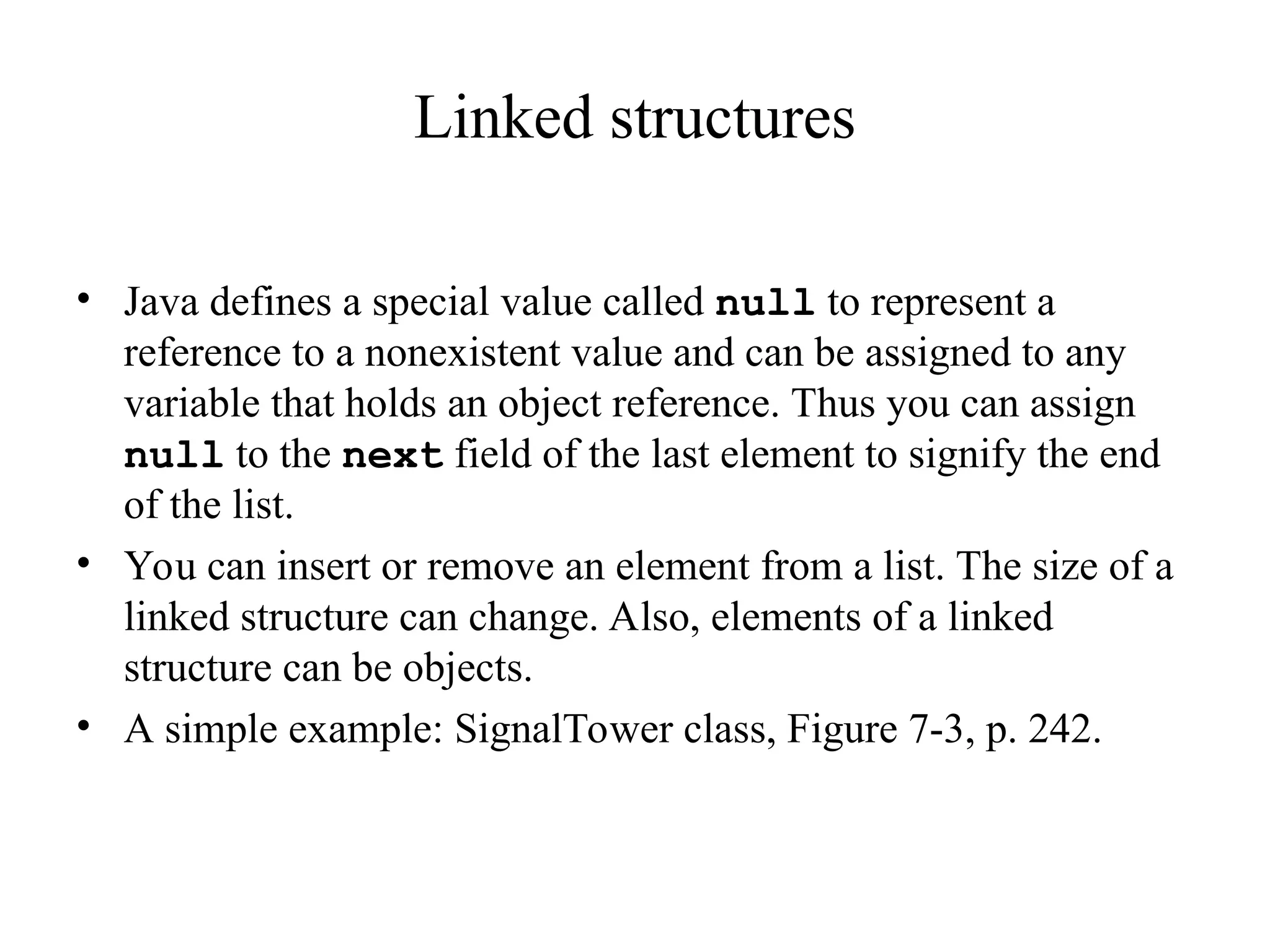
![Arrays vs. linked lists
• The two attributes that define a data type are: domain and a set
of operations.
• An array is a collection of items of the same type. It is
efficient to select an element. The addresses of array[i] is
the address of array + sizeof(overhead) +
i*sizeof(type). For example, if the type is int, then
sizeof(int) is 4. Since the array size is fixed, it is hard to
insert or delete an element.
• The items on a list can have different types. Linked lists can
represent general structures such as tree. Items can be inserted
to or removed from a list. However, to select an element, you
have to follow the links starting from the first item on the list
(sequential access).](https://image.slidesharecdn.com/ch11-240826123401-5afba3ce/75/Arrays-in-java-programming-language-slides-22-2048.jpg)